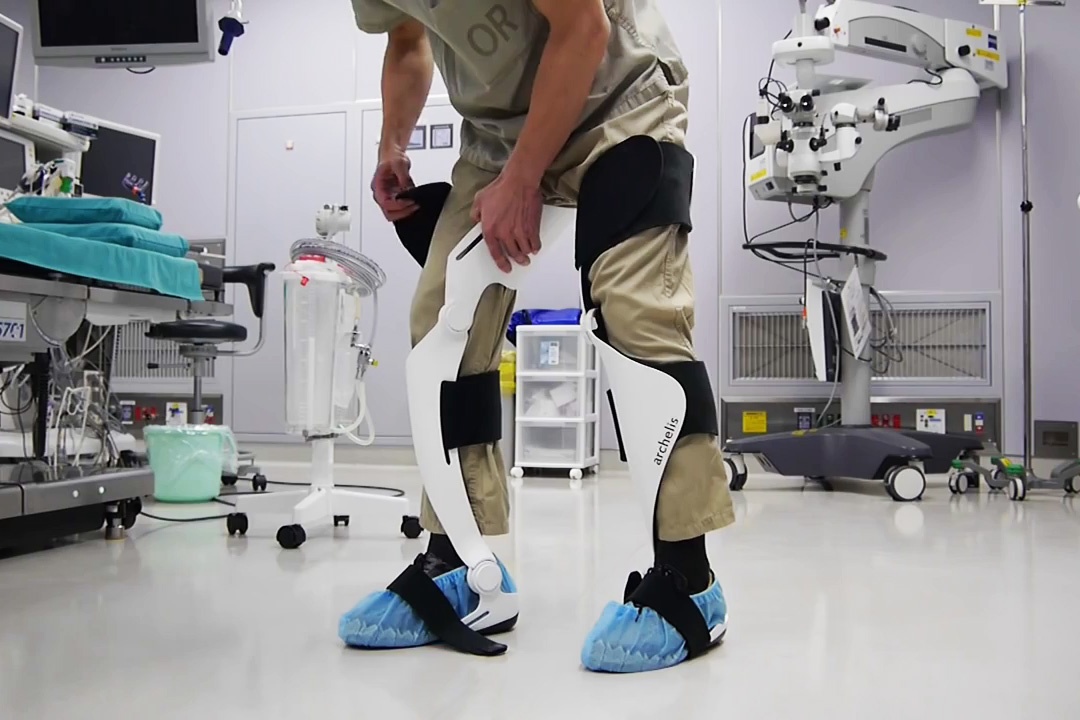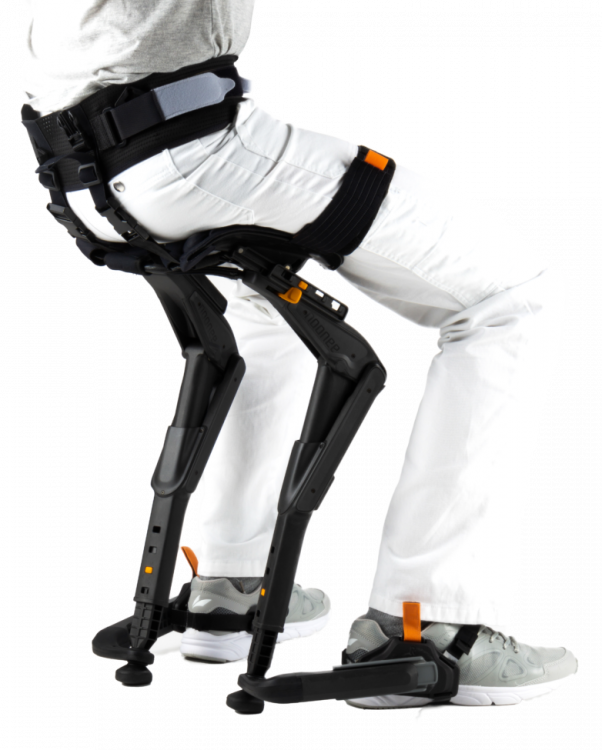Wearable chair Introduction
A wearable chair, also known as a sit-stand exoskeleton or a sit-stand device or bionic pants, is a wearable device that provides support for the user’s lower body and enables them to sit or stand while working. These devices are designed to help people maintain good posture and reduce the risk of musculoskeletal disorders (MSDs) associated with prolonged sitting or standing.
There are a number of different wearable chair designs on the market, each with its own unique features and capabilities. Some examples include the UpStanding exoskeleton, which allows users to sit or stand while working at their desk, and the GlideWear, which is a wearable device that helps people maintain good posture and reduce fatigue while standing for long periods of time.
One of the main advantages of wearable chairs is that they can help people maintain good posture and reduce the risk of MSDs, such as back pain, neck pain, and wrist pain, that are often associated with prolonged sitting or standing. These devices can also help improve productivity and reduce fatigue, as they allow users to sit or stand as needed throughout the workday.
Overall, wearable chairs are a useful technology for people who need to sit or stand for long periods of time, and can help improve comfort, posture, and overall health and well-being.
Uses of Wearable Chair
There are a number of different wearable chair designs on the market, each with its own unique features and capabilities. Some examples include the UpStanding exoskeleton, which allows users to sit or stand while working at their desk, and the GlideWear, which is a wearable device that helps people maintain good posture and reduce fatigue while standing for long periods of time.
Wearable chairs can be used by a wide range of people, including office workers, factory workers, and other individuals who need to sit or stand for long periods of time. These devices can be particularly useful for people with mobility impairments, as they can help them maintain good posture and reduce the risk of MSDs while performing physical tasks.
Overall, wearable chairs are a useful technology for anyone who needs to sit or stand for long periods of time, and can help improve comfort, posture, and overall health and well-being.
Advantages to using wearable chairs
Wearable chairs, also known as sit-stand exoskeletons or sit-stand devices, are designed to help people maintain good posture and reduce the risk of musculoskeletal disorders (MSDs) associated with prolonged sitting or standing. These devices are typically worn over the user’s clothing and are equipped with motors and sensors that can detect and respond to the user’s movements.
There are a number of advantages to using wearable chairs, including:
Improved posture: Wearable chairs can help users maintain good posture while sitting or standing, reducing the risk of MSDs such as back pain, neck pain, and wrist pain.
Reduced fatigue: Wearable chairs can help reduce fatigue by allowing users to sit or stand as needed throughout the workday, rather than being required to remain in the same position for extended periods of time.
Increased productivity: By helping users maintain good posture and reducing fatigue, wearable chairs can help improve productivity and overall performance on the job.
Enhanced mobility: Wearable chairs can be particularly useful for people with mobility impairments, as they can help them maintain good posture and reduce the risk of MSDs while performing physical tasks.
Improved health and well-being: By helping users maintain good posture and reduce the risk of MSDs, wearable chairs can help improve overall health and well-being.
Overall, wearable chairs are a useful technology for anyone who needs to sit or stand for long periods of time, and can help improve comfort, posture, and overall health and well-being.
Popular Wearable Chairs
There are a number of wearable chairs, also known as sit-stand exoskeletons or sit-stand devices, available on the market. Some examples of popular wearable chairs include:
UpStanding exoskeleton: The UpStanding exoskeleton is a wearable chair that allows users to sit or stand while working at their desk. It is designed to help users maintain good posture and reduce the risk of musculoskeletal disorders (MSDs) associated with prolonged sitting or standing.
GlideWear: The GlideWear is a wearable device that helps people maintain good posture and reduce fatigue while standing for long periods of time. It is designed to be worn under clothing and is equipped with sensors that can detect and respond to the user’s movements.
EksoVest: The EksoVest is a lightweight upper body exoskeleton that can be worn over a worker’s clothing to help them lift and hold heavy objects more easily. It is designed to reduce the risk of injury and improve productivity in industrial settings.
ReWalk exosuit: The ReWalk exosuit is a wearable chair that is designed to help people with spinal cord injuries walk again. It is equipped with motors and sensors that can detect and respond to the user’s movements, allowing them to walk in a natural and upright position.
ZeroG: The ZeroG is a wearable chair that is designed to help people with mobility impairments walk more easily. It is equipped with sensors and motors that can detect and respond to the user’s movements, providing additional support and power to their legs and hips.
These are just a few examples of the many wearable chairs that are available on the market. It is always important to carefully consider your specific needs and preferences when choosing a wearable chair, and to make sure that it is suitable for your intended use.
How to buy Best Wearable Chair
It is difficult to determine the “best” wearable chair, as different devices may be better suited for different individuals and purposes. Some factors to consider when choosing a wearable chair include:
Comfort: It is important to choose a wearable chair that is comfortable to wear for extended periods of time. Consider the material of the chair and the adjustability of the straps and other components.
Ease of use: Look for a wearable chair that is easy to put on and take off, and that is intuitive to use.
Support: Choose a wearable chair that provides the level of support you need, whether it be for standing, walking, or lifting heavy objects.
Size and fit: Make sure that the wearable chair you choose is the right size and fit for your body.
Price: Consider your budget when choosing a wearable chair, as prices can vary significantly.
Some popular wearable chairs that may be worth considering include the UpStanding exoskeleton, the GlideWear, the EksoVest, the ReWalk exosuit, and the ZeroG. It is always a good idea to do your own research from other users and sources before making a final decision.

